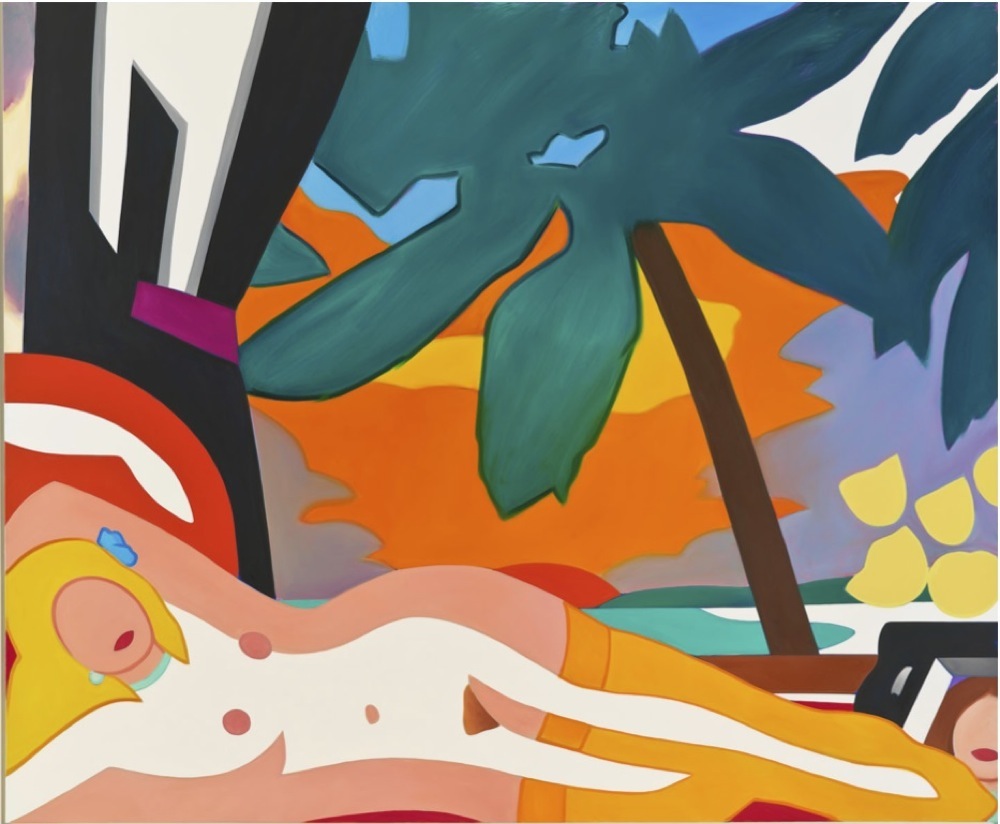New Again: Tom Wesselmann
In 2006, two years after the death of American pop artist Tom Wesselmann, a multitude of exhibitions opened in his honor, but starting tomorrow, the first painting retrospective in New York following the artist’s death will be on view at Mitchell-Innes & Nash. Organized in partnership with the Tom Wesselmann Estate, the exhibition will feature 12 works spanning the artist’s career, from 1961-2004, including pieces from his most revered series, “Great American Nude.”
Wesselmann, born in Cincinnati, Ohio and trained at both the Art Academy of Cincinnati and New York’s Cooper Union, helped pioneer steel-cut sculpture and the use of molded plastic within fine art. He brought found objects into the canvas, pushing the boundary of collage and assemblage, and often found himself reinterpreting classical nude portraits, still lives, and landscapes through the inclusion of popular imagery and commodities of the time. In honor of the forthcoming retrospective, here we reprint an interview in which Tom Sachs (who announced a forthcoming solo show at Jeffrey Deitch Gallery yesterday and currently has a retrospective on view at the Brooklyn Museum) reflects upon Wesslemann’s influence and career.
Artist Tom Sachs Zooms in on the Most Enigmatic Pop Art Figure of All
INTERVIEW: Tom Wesselmann’s having a comeback—one can just feel it. His work has been up front and center at the most important recent art fairs and this spring it’s the subject of a number of New York shows, including “Tom Wesselman: Sunset Nudes” at the Robert Miller Gallery and “Tom Wesselmann: The Sixties” at L&M Arts, which focuses on his pivotal early works. Wessemann is one of the pop artists whose work got lost there for a while. Why the spotlight on it now?
TOM SACHS: Every genre is defined by one artist. Pop art equals Andy Warhol and minimalism equals Donald Judd. I’ve always though that Wesselmann represented pop icons even more clearly and succinctly than Warhol, because Andy was such a far-out artist. He was doing so many things and there were so many aspects of his work you could think about. Wesselmman’s vision was much more concise—even narrow—which makes it easier to understand. But it’s not just that quality that would bring him and his work back to people’s attention. There’s also the flatness of it. You can’t underscore enough the impact of all this super flat stuff coming from Japan, especially from director Hayao Miyazaki, who did Spirited Away (2001) and Howl’s Moving Castle (2004)—he’s the Mozart of animation. Those are the best movies being made right now and they do everything that Wesselmann did in terms of flattening the subject and leaving out parts for your eye to fill in. Like Louis Armstrong, who might leave out keynotes that you’d mentally connect to the others, Wesselmann might leave out eyes, but your mind would conjure them up.
INTERVIEW: What is it about pop art that makes it always seem so relevant?
TOM SACHS: The thing that excites me about the pop artists and Wesselmann is how they represent the moment before we lost the revolution. There was a time when we weren’t sure if Big Brother was going to win. He did, but before that there was a chance. There’s this scene in the movie Basquiat (1996) where Benencio Del Toro’s character tells Basquiat it takes five years to get famous, 10 years to get rich, and then you’ve got 20 years to keep making what “they” want. I’m paraphrasing, but essentially he’s saying that the creative work is what people want you to keep producing.
INTERVIEW: What was Wesselman’s signature?
TOM SACHS: He did great nipples. He really nailed them. The models are always in elevation, so you see the ski-jump perfection of the breast just right.
INTERVIEW: Some people might say that focus on nipples is sexist.
TOM SACHS: It is sexy.
INTERVIEW: We said sexist, not sexy.
TOM SACHS: But he was being sexy. [everyone laughs]
INTERVIEW: Thank you Mr. Spinal Tap.
TOM SACHS: But seriously, with Wesselmann you’ve got this perfect pop-abstract representation of the female figure. You’ve got near perfect primary colors, almost like Matisse; there’s something really cartoon about Wesselmann. He also turned up, in a way, in Stanley Kubrick’s A Clockwork Orange (1971), which people are rediscovering now on DVD. There’s a lot of art in that movie—even a Wesselmann-type painting. I think that movie represents pop art better than anything.
THIS ARTICLE ORIGINALLY RAN IN THE MARCH 2006 ISSUE OF INTERVIEW.
New Again runs every Wednesday. For more, click here.







